As an ATV owner, it’s a good idea to learn a few basic mechanical skills, such as being able to bleed the brakes when needed.
This job is relatively easy to do and can save you quite a few bucks on mechanical expenses. Follow this guide, and you have a great chance at succeeding with just about every brake bleeding job.
Hydraulic brake systems use special brake fluid to transfer the energy from your hand or foot and down to the brake caliper. The fluid is essential for proper brake function.
Inside the caliper, a piston is being activated by the brake fluid when pressure is being applied. The piston will then press the brake pad against the brake disc, creating friction to stop the bike.
Bleeding the brakes means letting out some of the brake fluid to remove trapped air or to replace the brake fluid altogether.
You can bleed the brakes with the wheels still attached, but it is best to remove them before starting the bleeding job for better access.There are two leading causes for having to bleed the brakes on your ATV:
Brake fluid cannot be compressed, but air can. If even the smallest bubble of air enters the system, the brakes will not function as they should but rather feel soft and squishy. To get all of the air out of the system, we need to “bleed” the brakes.
Air may enter the system if you replace or disassemble one or more components connected with the brake line, such as removing the brake caliper for a service. Or you may have a brake line come loose, allowing air to enter the system.
Please note that air should not get into the system under the regular operation of the ATV. Therefore you have to locate and address the cause of the leak before bleeding the brakes.
Another common situation where knowing how to bleed the brakes comes in handy is when it is time to replace the old brake fluid with new. So-called flushing the brakes.
So-called flushing the brakes.
Brake fluid is hygroscopic, which means it absorbs water over time. Also, it breaks down when being exposed to heat. The fluid closest to the brake calipers is the most affected because of the heat produced when breaking.
Healthy brake fluid should look clear or with just a slight amber color. If it looks like cola, it is well overdue for being replaced.
Bad brake fluid will negatively affect your brakes’ performance, so make sure you replace it in time. Luckily this job is both cheap and usually relatively easy to do.
It’s a good idea to completely replace the brake fluid on your bike every time you change your brake pads or at intervals according to your ATV service manual.
Most ATV’s have one master cylinder for the front brakes on the handlebars and another one for the rear brakes in a separate location. The reservoir for the foot pedal is often located a bit away from the actual cylinder unit.
The setup will vary from model to model. Some bar-mounted master cylinders will operate both the front and rear brakes as well.
The method for bleeding them, however, is pretty much identical.
To locate the master cylinder(s) on your bike, trace the brake lines from the brake caliper. You need to address each brake fluid reservoir connected with the brake you are having problems with.
Here you can see the hose running from the rear brake master cylinder and up to the brake fluid reservoir.If you are not sure where your problem is, you might as well bleed the brakes on all four wheels. Then start with the caliper the furthest from the master cylinder and move against it.
Let us begin with the standard method for bleeding any hydraulic brake system. It requires almost no tools or previous mechanical experience.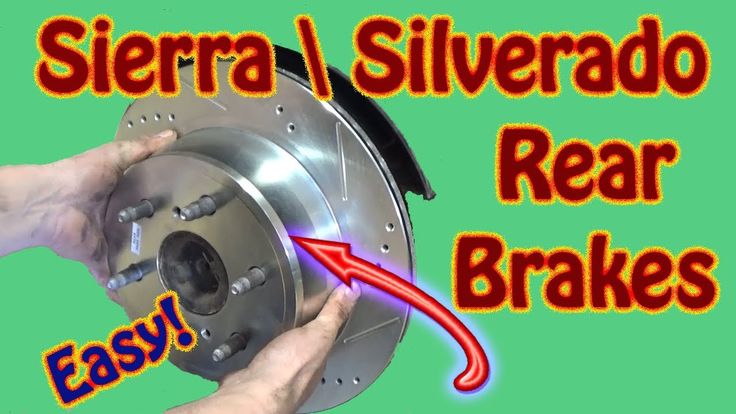 Just follow the steps below:
Just follow the steps below:
Optional (but recommended):
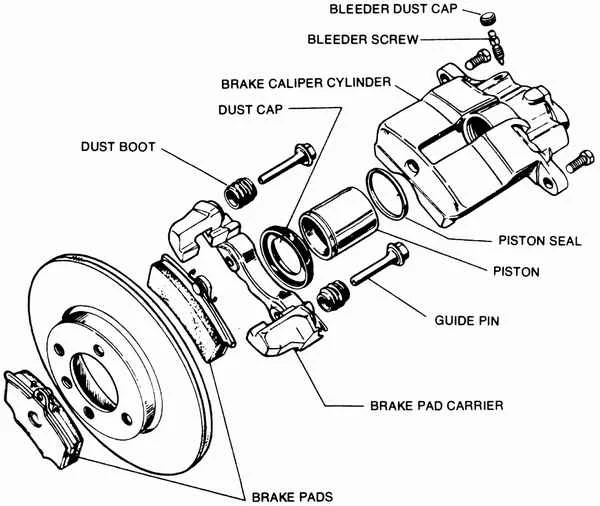 Use it to collect old brake fluid for proper disposal. Not only will the environment thank you, but you will keep your shop and ATV clean as well.
Use it to collect old brake fluid for proper disposal. Not only will the environment thank you, but you will keep your shop and ATV clean as well.1. Jack up the ATV.
Start by jacking up the ATV and remove the wheels where you are bleeding the brakes. It is possible to bleed the brakes without removing the wheels, but you will get much better access to the bleed nipple with the wheel out of the way. If this is your first time bleeding the brakes, I always recommend removing the wheels.
2. Remove the brake fluid reservoir cap.
You will need to add new brake fluid as the old goes out. The lid on the reservoir up on the handlebar is held in place with two hex screws. Be careful as the threads strip quite easily.
You find the brake fluid reservoir up on the handlebar.Depending on the bike’s age and the time since the screws were removed, they may be grown in there pretty good. This is where the small impact drivers come in handy. Find the correct bit and use the driver by giving a light tap.
This is where the small impact drivers come in handy. Find the correct bit and use the driver by giving a light tap.
This will knock loose any corrosion and open the screw slightly at the same time. One knock is usually sufficient. The reservoir for the foot pedal usually has a twist cap that unscrews by hand.
3. Clean the cap and rubber diaphragm thoroughly.
You do not want to contaminate the system with debris, dirt, or water when reassembling it later.
Clean the area surrounding the brake fluid reservoir before opening the lid carefully.4. Top of the brake fluid up to the maximum level mark.
Pay close attention so that the brake fluid level in the brake fluid reservoir never drops below minimum while bleeding the brakes. You may need to top off the reservoir several times before you are finished.
It’s recommended that you reinstall the lid before moving to step 5. While it is possible to pump the brakes with the cover off, you run a significant risk of quirting brake fluid all over your bike if you pump the brakes too hard or too fast.
5. Pump the brake lever or foot pedal 3-4 times, depending on which brake system you are bleeding.
Remember to pump carefully if you do this with the lid open! Then keep the lever-activated by hand or by putting on a spring-loaded clamp to keep it under tension.
A spring-loaded clamp or even a bungee cord may be of good help if there is no one around to assist you.6. Open the bleeder valve.
Start with the valve that is the furthest from the brake fluid reservoir. It is located on top of each brake caliper and is opened by turning it anti-clockwise about half a turn. You should see brake fluid squirt out of the bleeder.
Let the brake fluid flow into a container to keep your ATV and garage clean.7. Close the bleeder valve when the brake lever or foot pedal reaches about 80% of its overall travel length.
Do NOT overtighten the bleeder. The threads in the aluminum brake calipers strip easily!
8. Repeat until the brake fluid that comes out of the bleeder is completely free of air bubbles.
Repeat until the brake fluid that comes out of the bleeder is completely free of air bubbles.
This may take a while, depending on how much air there is in the brake lines.
9. Follow the same procedure on all four wheels.
Some bikes have just one combined brake caliper for the rear wheels.
10. Top off the brake fluid reservoir up to the maximum mark.
The mark may be a line found inside the reservoir or an inspection gauge on the side. Other reservoirs have a gauge on top of the reservoir cover that is white when brake fluid levels are low but turns black when the correct level is reached.
This is how it should look like when you have enough brake fluid in the reservoir.11. Replace the lid and rubber diaphragm.
Make sure it is seated properly. Do not over-tighten the bolts. You are now done and can reinstall the wheels.
The manual method works fine most times, but not always. It comes with a few annoying downsides as-well:
It comes with a few annoying downsides as-well:
The master cylinder on an ATV and the piston inside it are relatively small compared to those you find on cars on any other larger vehicles. Because of its small size, it can only pump a relatively small amount of brake fluid with each pump.
This makes the standard method of bleeding brakes work less efficiently on smaller brake-systems found on ATVs, UTVs, dirt bikes, motorcycles, or snowmobiles.
The amount of fluid being pumped may not be enough to move the bubbles of air out before you bottom out and have to start a new pumping cycle.
It will take about 10-15 minutes to completely flush the brake system on an ATV using the standard method. It will take even longer if you do it on your own.
If you’re having problems removing all of the air, you may be looking at several hours of struggle before you eventually succeed or give up.
When you pump the brakes, you force the air downwards against the bleeding valve. Air is lighter than brake fluid and will always want to go upstream, away from the bleed valve.
Air is lighter than brake fluid and will always want to go upstream, away from the bleed valve.
Combined with a small pump, you may not be able to get all of the air down to the bleed valve.
So then what? Luckily there is another cheap and easy method for bleeding the brakes that work very well.
Vacuum bleeding is another cheap and easy way you can use to bleed the brakes properly.
In addition to the five first bullet points listed for the standard method, you will also need a hydraulic brake bleeder tool.
These come in various shapes, but they all work by the same principle: they suck the brake fluid down and out through the bleed valve using a vacuum.
Some models use a hand pump to create the vacuum. They will also have a one-way check valve that allows brake fluid to flow out of the brake caliper without letting air back into the system when you release the pump.
Other models connect to an air compressor to create the suction effect.

Now you should be ready to tackle almost any brake bleeding jobs. But from time to time, even the vacuum pump won’t be sufficient to bleed all of the air out of the system.
Before taking the bike to your dealer, it’s worth reading through this post on what to do when you’re not having success bleeding the brakes using the methods described above.
Alternatively, you can try to reverse bleeding the brakes on your ATV.
After rebuilding or replacing the master cylinder on your ATV, you will need to bleed it separately to get all of the air out. The same applies if you bleed your brakes and accidentally let the brake fluid reservoir run dry, allowing huge amounts of air to enter the system.
In this post, we will have a look at 6 alternative ways of doing this procedure.
With this procedure, you bleed the master cylinder when it is still attached to the ATV.
To perform this job, you need almost no tools. All you need is:

Here you can see the banjo bolt still connected to the brake fluid reservoir.
Most of the brake fluid will stay inside the reservoir even after removing the banjo bolt.
Use your finger to cover the exposed outlet port.
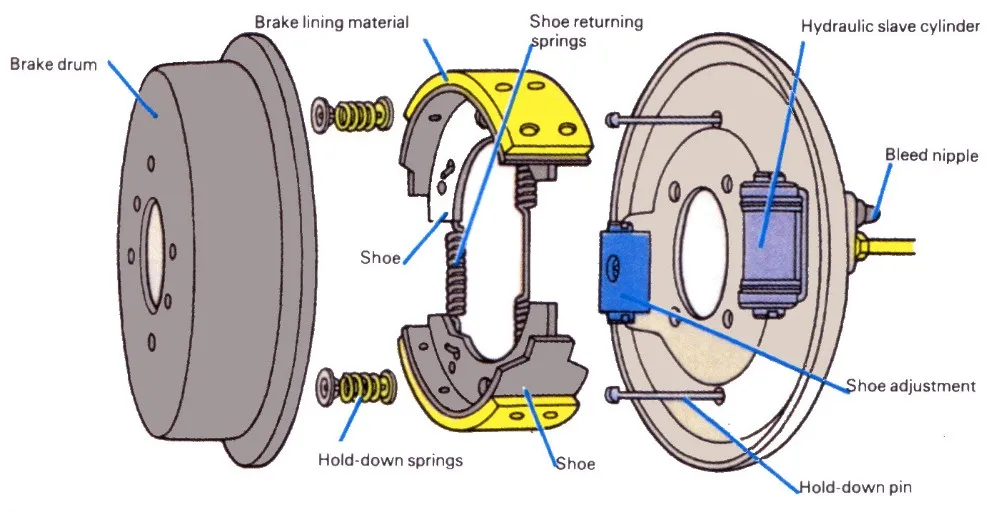
Remove your finger and insert the banjo bolt as fast as you can.

A variation of the above methods is when you, instead of controlling the fluid stream with your finger, use the banjo bolt as a bleed valve.
Step 1 to 4 is identical as above.
5. Then pump the brake lever as you do when manually bleed the brakes.
6. But instead of opening the bleed valve by the caliper, you open the banjo bolt until the brake fluid starts sputtering out.
7. Tighten the bolt when the brake lever is about 80% engaged.
8. Re-apply pressure and open the banjo bolt again.
9. Continue until you get a sputter-free stream of brake fluid.
10. Then bleed the brakes normally. You should now be able to build proper pressure.
This method may be a bit messier, so make sure you use plenty of rags to keep your ATV protected.
Related: 12 reasons why your ATV brakes won’t build or hold pressure.
You’re probably starting to realize there is almost no limit to how many ways you can bleed the brakes on an ATV. Here is another tip to try.
Here is another tip to try.
Instead of letting the brake fluid squirt out of the banjo bolt and down onto a rag, you can direct it back up into the reservoir. Insert a piece of clear tubing into the outlet port on the reservoir and put the other end of the tube down into the master cylinder.
Use a piece of tube to direct the brake fluid back into the reservoir.Make sure it is completely submerged at all times. Then start pumping.
Continue until you see only clear brake fluid inside the clear tube. When you are done, install the banjo bolt quickly, so as little air as possible gets into the system. Top off the brake fluid reservoir and leed the brakes as normal.
The expression “bench bleeding” comes from removing the master cylinder off a car and bleed it on a workbench.
On an ATV, you don’t actually have to physically remove the master cylinder from the bike to “bench bleed” it, It is just as accessible where it is sitting on the bike.
It’s actually faster and easier to bleed it when still attached to the bike, but you run a small risk of spilling brake fluid on the ATV. Brake fluid is corrosive and will damage paint and plastic.
Another benefit of bleeding the reservoir on the bench is that you are free to rotate it so that the outlet port can be facing upwards when you are done bleeding.
This way, you can better prevent air from getting back into the system during installation. The banjo bolt can be installed with the port still facing upwards before fastening the master cylinder to the handlebar again.
Ultimately it is up to you whether you want to bleed the master cylinder when still attached to the handlebar or if you want to remove the whole assembly and perform the job over at your workbench.
The same tools as the first method. Also, you need the proper tools to remove the master cylinder from the handlebar. This varies between the brands and models of ATVs.
The procedure is pretty much identical with bleeding the master cylinder when still attached to the bike. But before you begin, you need to remove the whole assembly from the ATV.

If you’re not having any success bleeding the master cylinder just by pumping, you can try using a hand pump brake bleeding tool.
Depending on what model you get, these can be used for both pressing brake fluid through the master cylinder or sucking brake fluid down by utilizing vacuum.
The tool comes with a rubber adapter that can be inserted into the outlet hole on the reservoir. Follow the tool directions and press brake fluid back into the master cylinder assembly until no more bubbles appear in the reservoir.
Alternatively, you can switch the tool over to vacuum and suck brake fluid down from the reservoir and into the too through the same outlet port. If this does not help, you likely have a bad master cylinder and need to rebuild it to get it to start pumping again.
The rear brakes on many ATVs will have their own master cylinder.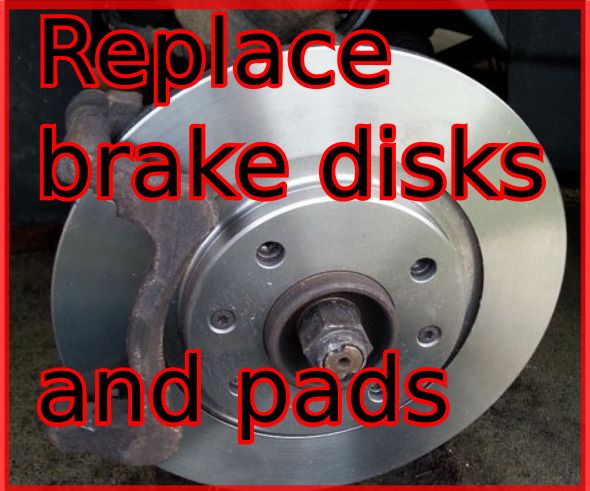 To bleed it properly, it is best to remove it and properly bench bleed it.
To bleed it properly, it is best to remove it and properly bench bleed it.
 Please make sure you add more brake fluid into the reservoir when it is running low. As an upside, this way of doing the job will completely flush the system, replacing the old brake fluid with new.
Please make sure you add more brake fluid into the reservoir when it is running low. As an upside, this way of doing the job will completely flush the system, replacing the old brake fluid with new.Related: ATV brakes won’t bleed; 9 possible causes.
After getting such a large amount of air into the master cylinder, you will likely have difficulty getting it all out with just the manual ways of pump-bleeding. That is if you can get it to start pumping fluid at all.
Inside the master cylinder, there are a lot of pockets and passages where air can get trapped.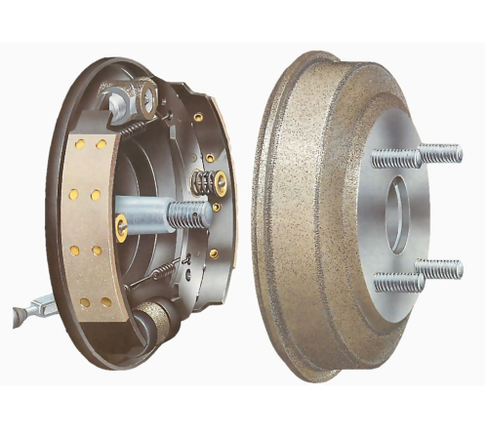 The flow of brake fluid alone will not be able to reach it all and get it out.
The flow of brake fluid alone will not be able to reach it all and get it out.
Also, you are fighting gravity. All of the air inside the system wants to go up and into the master cylinder.
Vacuum bleeding may work, but not always. Air may still be trapped within these passages, even after performing a proper vacuum bleed. But it is worth trying if you already own a vacuum bleeder or can borrow one.
You may be lucky and achieve a decent result by just adding fluid and bleeding as normal. But you will likely spend less time and get a better overall result if you bleed the master cylinder properly right away.
ATV brakes are a basic safety system and should work perfectly. And if you notice the slightest slippage or decrease in the efficiency of the nodes, the system needs to be checked. Therefore, let's figure out how to pump the brakes on an ATV and diagnose all the components.
The first fluid change is recommended as soon as the rider has purchased the ATV. The fact is that many manufacturers fill in the cheapest composition, which does not have a high operational resource.
The fact is that many manufacturers fill in the cheapest composition, which does not have a high operational resource.
After buying a used ATV, you also need to service the brake system: change the fluid, check the hoses and pads. Remember that during the operation of equipment, moisture and air enter the composition. This leads to the formation of corrosion and even freezing of the liquid in winter. For example, if the composition contains only 3% water, its operating temperature drops from 230 to 165 degrees.
You need to figure out how to pump the front and rear brakes of an ATV even in case of their “failures”. If the lever has lost its elasticity, then air or moisture has accumulated in the system, which has affected the characteristics of the fluid.
Before you adjust the brakes on your ATV, have the necessary tools ready. To bleed the system you will need:
 It is best to take a bottle and a tube from a dropper, which can be connected to a drain fitting. Thus, the spent composition will not get on the parts of the ATV.
It is best to take a bottle and a tube from a dropper, which can be connected to a drain fitting. Thus, the spent composition will not get on the parts of the ATV. It is worth noting that in order to pump the ATV, you need a partner who will clamp the brake lever. If there is no assistant, you can fix the position of the brake lever with a belt.
Bleeding the brakes scares many motorists. However, the procedure itself is very simple, so even a novice ATV rider can handle it. The rider only needs:
 Before you bleed the front brakes on your ATV, make sure you have access to the caliper. If you can’t get to the node, you need to remove the wheels.
Before you bleed the front brakes on your ATV, make sure you have access to the caliper. If you can’t get to the node, you need to remove the wheels.  Such pumping is performed until the lever becomes elastic.
Such pumping is performed until the lever becomes elastic. This procedure is carried out for all calipers (front and rear). But if the brakes on the ATV do not pump, then you need to find places in the system where air accumulates and eliminate them.
Experienced motorists recommend using only high-quality brakes that are suitable for specific temperatures. This means that for summer and winter you need to choose different compositions.
Riders also advise:

Also buy a spare brake. If the documentation indicates that 0.5 liters of fluid is needed to bleed the system, buy 1 liter of the composition. The fact is that the recommended volume is indicated based on the experience of specialists. A novice ATV rider can spend more brakes.
19.02.2021 3929
Buying a reliable ATV is great. But in order for it to be really reliable and not fail at the most inopportune moment, it must be regularly serviced, and in particular, the brakes must be bled after the repair of the elements of the brake system.
To bleed the ATV brakes yourself, you will need the following tools:
ATV's brake circuits operate from the front and rear brakes. The first is located on the frame of the vehicle, and the second is on the steering wheel.
To complete this procedure, and Linghai ATVs are no exception, you need the help of a friend. Bleeding the rear and front brakes of the ATV is as follows:

Checking if the ATV's brakes have been bled correctly is quite simple, just press them. If you feel a moderate hardness, then everything went well, and if they are still soft, then this means that air has entered the brake system. To get rid of it, slightly loosen the brake hose fasteners.
Among the most common breakdowns of the brake system of an ATV, it is worth highlighting:
If your ATV's disc brakes are deteriorating, it is recommended that you bleed them by changing the brake fluid. Preliminary check all elements of the brake system for serviceability and absence of damage in order to exclude the possibility of their wear. If any part of the ATV is still out of order, then it should be replaced with a new one.
Brake pads break more often than other functional motorcycle components because they are made of composite materials instead of metal. The pads can be replaced both independently and by contacting a service center. Quite often, the brake calipers of the ATV also break. With sudden braking, they overheat, which negatively affects the service life of this component. In order not to have to repair the brake calipers too often, it is recommended to change the oil regularly. Sometimes calipers from OKI are put on ATVs, but before that they need to be somewhat modified on a milling machine. A good option if the original calipers cannot be repaired.
Bleeding the brake system on children's ATVs is the same as on full size motorcycles. The main thing is to choose a high-quality and reliable brake fluid that will cope with its task at a decent level.
The most wear and tear-prone component of a child's ATV is the brake pads.